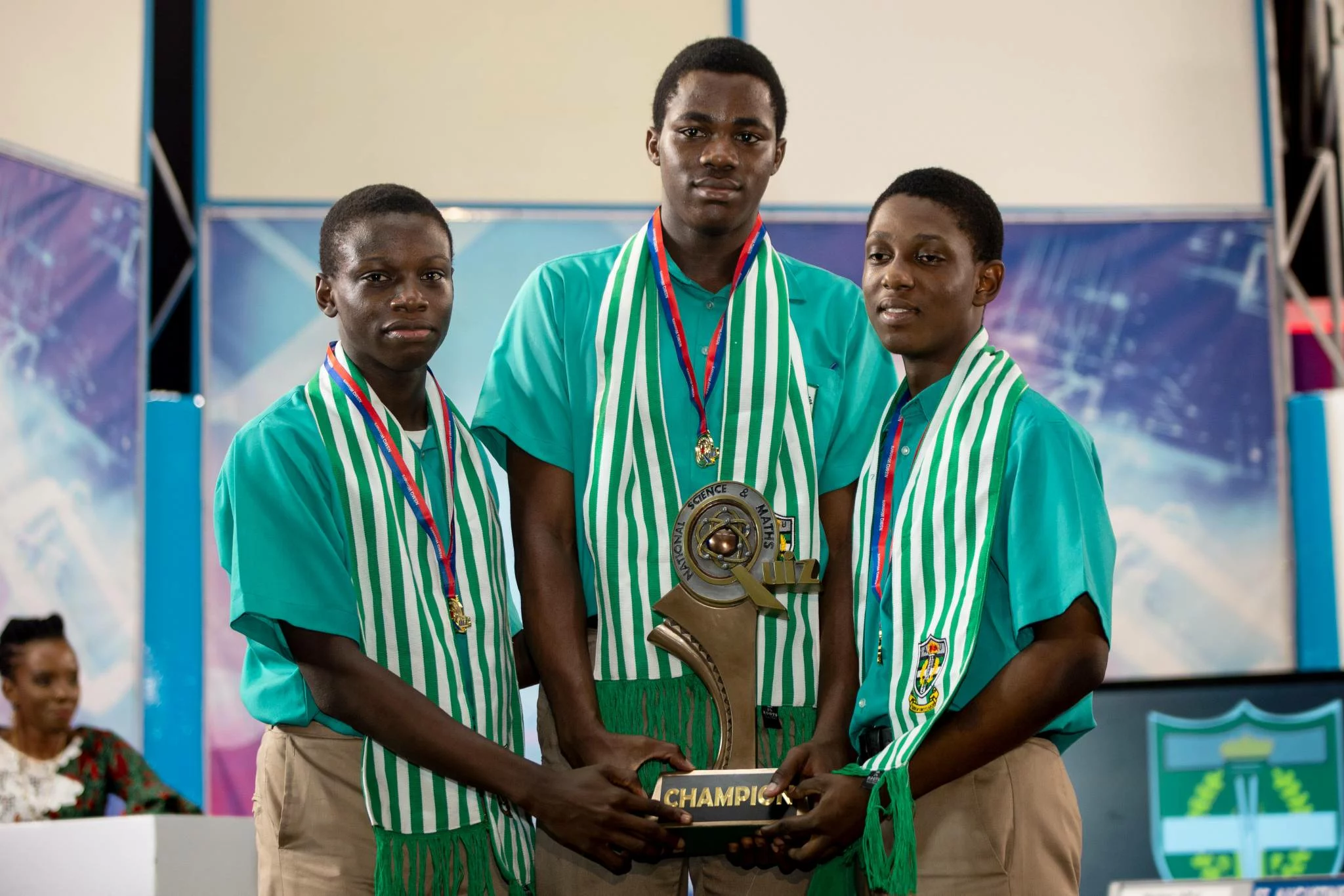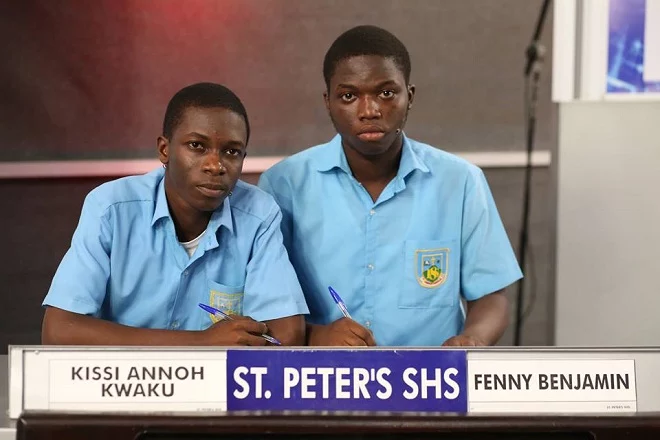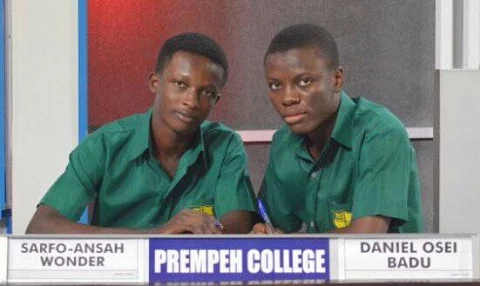National Science and Maths Quiz (NSMQ)
Room 30
National Science and Maths Quiz | NSMQ
The National Science and Mathematics Quiz, popularly known as NSMQ, is a quiz programme organized by Primetime Limited to promote the study of science and mathematics in Ghana. Due to the fame, prestige, opportunities and prizes involved in the competition, it has become an ambitious project for the various Senior High Schools (SHS) and science students.
For Project VIEW, we see the NSMQ as a great tool to facilitate the proper and effective Science and Mathematics education in an effort to STEM Ghana into a hub of engineering and technological advancements. Hence, we have taken a keen interest in resourcing individual students, as part of the Levelz program, to excel on the quiz stage and indirectly impact on their academics.
How to excel in the NSMQ
The above link leads to the Levelz Platform where you can train yourself to be highly competitive in interested areas. Because we want you to have every advantage, we try our best to resource the platform with everything you will require to sharpen the skills and techniques.
National Maths and Science Quiz Structure
Round One
This is known as the Round of Fundamentals.
In this first round of a contest, the questions are presented in sets. Each set has 3 question, is bound to a single subject and is limited to a focused topic under that subject. If the contest is at the Prelims or 1/8th stage of the competition, the Round One has a total of 8 sets of questions: 2 for Maths, 2 for Physics, 2 for Chemistry and 2 for Biology. From the Quarter-finals to the finals stage, it becomes 12 sets: 3 for each subjects.
In every set, schools take turns to attempt their unique questions called the major/main questions. A correctly answered question attracts 3 points and there may be instances where partial credits, like 1 or 2, are awarded. However, an incorrect answer or a timed-out scenario for a major question doesn’t attract any penalty, but will rather make it available to other schools as a bonus question. In that event, the others can ring for it – a successful attempt attracts 1 point and an unsuccessful attempt gets -1 point. A bonus question can be attempted by only one other school.
For questions involving calculations, the schools have 30 seconds to ring the bell for a chance to attempt. If there are no calculations, they have just 10 seconds. In the case a question is declared as a bonus, the others have a 10-second window to ring for it.
Round Two
This is known as the Speed Race.
Here, the questions are also asked in sets. Each set has 3 questions and is bound to a single subject, but not limited to any topic under that subject. Typically, there are 12 questions (meaning 4 sets) in all during the Speed Race: 3 questions each for Maths, Chemistry, Biology and Physics.
Unlike in the Round One, every question presented applies to all the 3 schools at the same time. A school has to ring the bell to get an attempt to the question. The first school to ring gets the first attempt where a correct answer is worth 3 points. Upon the failure of this attempt, the next other school to ring gets the second attempt where a correct answer is worth 2 points. Should that attempt also fail, the last school can ring and attempt the question for 1 point. It must be noted that any unsuccessful attempt in the round attracts -1 point for the school.
For questions involving calculations, the schools have 30 seconds to ring the bell for a chance to attempt. If there are no calculations, they have just 10 seconds. As you can already deduce, this round has no “bonus” questions.
Round Three
This is known as the Problem of the Day.
All the 3 schools are presented with a single problem to solve. It can be either Maths, Physics, Chemistry or Biology. The time given for the schools represented by their contestants to provide a single solution to the given problem is 4 minutes. Before that, the Quiz moderator reads out the given problem to the benefit of both the contestants and the audience. The catch for the round is the perfect 10 points.
After the time limit is up, all schools are asked to stop work. The moderator then visits their solutions school-by-school, inaudibly assesses and awards points according to the consultant’s marking scheme. At this point, only the moderator knows the point(s) awarded to each school.
Now, he or she returns to the seat and reads out the answers provided by the scheme. It is after that he or she vocally assesses the schools’ works and awards the points while justifying the reasons. The standard practice is for the moderator to begin with the school awarded the lowest points after the inaudible assessment.
Round Four
This is known as the True or False.
Here is the trickiest round in the whole contest even though the probability of getting an answer right is 50%. It is every similar to the Round One. The questions are presented in sets. Each set has 3 question, is bound to a single subject and is limited to a focused topic under that subject. The round has a total of 8 sets of questions: 2 for Maths, 2 for Physics, 2 for Chemistry and 2 for Biology. This also means that every school will receive 8 total True or False questions by the end of the round.
In a set, the school takes turns to determine whether the question presented to them is a True or False statement. A correctly answered question attracts 2 points while an incorrectly answered one gets a -1 point. A school can decide not to attempt their given question and they won’t be penalized, but it then becomes available to the other schools to attempt as if it were their main question.
If the statement read involves calculations, the school has 30 seconds to begin an attempt. If there are no calculations, they have just 10 seconds. In the case a question is declared as a bonus, the others have a 10-second window to ring for it.
Round Five
This is known as the Riddles.
Last days are always dangerous and, hence, this round singlehandedly crafts almost every drama one can find in a contest or competition. It consists of 4 riddles, one for each subject. Just like the Speed Race, each riddle applies to all the contesting schools at the same time. For a chance to attempt, a school must ring for it. However, this round doesn’t penalize for an unsuccessful try.
In a riddle, clues are read out by the moderator to hint at the answer. At any time a school feels they have had enough, the contestants can ring the bell. The interesting bit is points are awarded based on the clue level read at the time the bell went off. The right answer on the first clue is worth 5 points, on the second clue is worth 4 points and on any clue thereafter is worth 3 points. An unsuccessful attempt to a particular riddle means the school has to sit out and wait for the next one while the other schools left compete for the current one.
Once all the 4 riddles are exhausted, the round is brought to an end and that concludes the contest.
NSMQ Past Questions and Answers
In the spirit of promoting an effective study of Science and Mathematics, the Levelz program has taking the liberty to review all the questions that came up during the competition over the years and provide answers with clear, detailed explanations for the best perspective.
Connect with us
Kindly vibe with us on our socials to increase our reach and propel the project to greater heights. You can reach us there with all your inquiries, suggestions and more.















